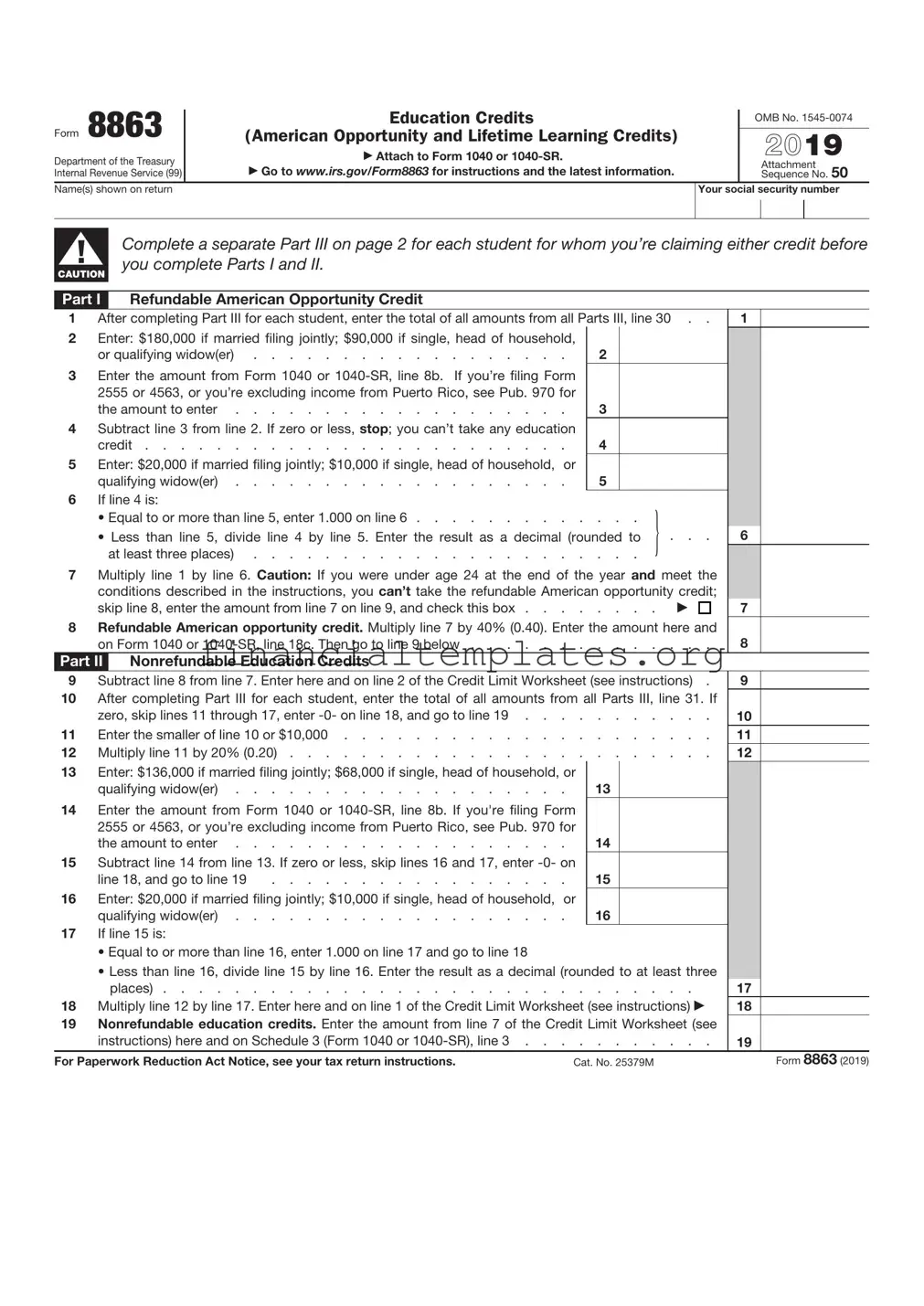The IRS Form 1040, the individual income tax return, shares a fundamental connection with Form 8863, Education Credits. Both serve crucial roles in the annual tax filing process, providing taxpayers avenues to report income, deductions, and applicable credits. Form 8863 specifically complements Form 1040 by allowing taxpayers to claim two significant education credits – the American Opportunity Credit and the Lifetime Learning Credit – directly impacting the final tax liability or refund on their 1040 form.
Form 1098-T, Tuition Statement, is closely aligned with Form 8863 in the tax filing process. Educational institutions issue Form 1098-T to students, detailing the amounts billed for tuition and qualified expenses, and scholarships or grants received. Taxpayers use this information to accurately complete Form 8863 and determine their eligibility for education credits, making these documents interdependent in claiming education-based tax benefits.
Form 1040 Schedule 3, Non-refundable Credits, also shares similarities with Form 8863. While Form 8863 is dedicated to calculating education credits, Schedule 3 encompasses a broader range of non-refundable credits, including the education credits calculated on Form 8863. This makes Schedule 3 a consolidating document that incorporates various credits, including those from Form 8863, to adjust income tax owed on the main 1040 form.
IRS Form 8862, Information To Claim Certain Refundable Credits After Disallowance, is indirectly related to Form 8863. If a taxpayer’s claim for the education credits on Form 8863 is denied due to a math or clerical error in a prior year, they may need to file Form 8862 to reinstate their eligibility for these credits. This creates a procedural link between the two forms, highlighting the need for accuracy and compliance in claiming tax benefits.
Form 8917, Tuition and Fees Deduction, is another document that operates in the realm of education-related tax benefits, akin to Form 8863. Prior to its expiration, Form 8917 allowed taxpayers to reduce their taxable income by up to $4,000 for qualified tuition and fees, an alternative to claiming education credits. Although the tuition and fees deduction is not currently available, when it was, taxpayers had to choose between it and the credits on Form 8863, emphasizing the strategic decisions taxpayers make based on their individual circumstances.
IRS Form W-2, Wage and Tax Statement, although primarily a document for reporting wages and taxes withheld by employers, has an indirect relationship with Form 8863. Information from Form W-2 helps taxpayers determine their total income, which in turn affects eligibility for education credits. The total income reported on Form W-2 can influence the phase-out calculations for the American Opportunity and Lifetime Learning Credits on Form 8863, demonstrating their interconnectedness in the tax preparation process.
Form 1099-Q, Payments from Qualified Education Programs, while primarily focused on distributions from 529 plans and Coverdell ESAs, interacts with Form 8863 since it reports payments that may cover qualified education expenses. Taxpayers need to account for these funds when calculating education credits, as using tax-advantaged distribution to pay for expenses can affect the amount of credit claimed on Form 8863.
Lastly, IRS Form 4506-T, Request for Transcript of Tax Return, though more procedural in nature, is a vital tool for taxpayers when dealing with Form 8863. If discrepancies arise or there’s a need to substantiate education credits claimed in prior years, Form 4506-T allows taxpayers to request a copy of their past tax returns. This proves critical for verifying previously claimed education credits and ensuring ongoing eligibility or correcting errors related to Form 8863 submissions.


